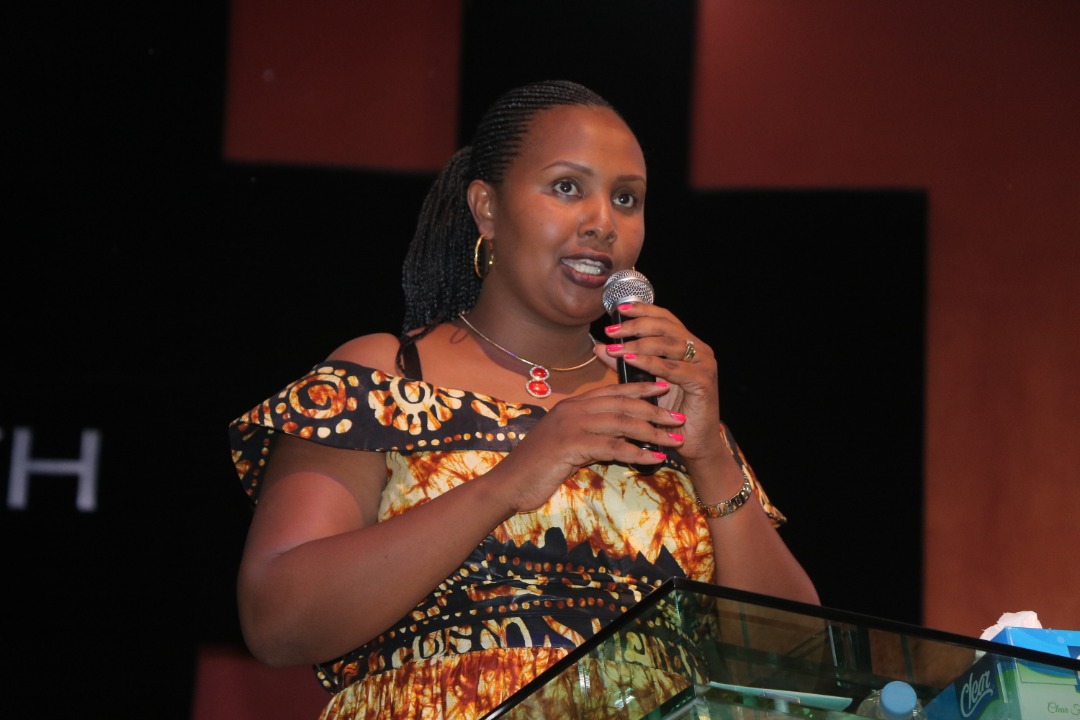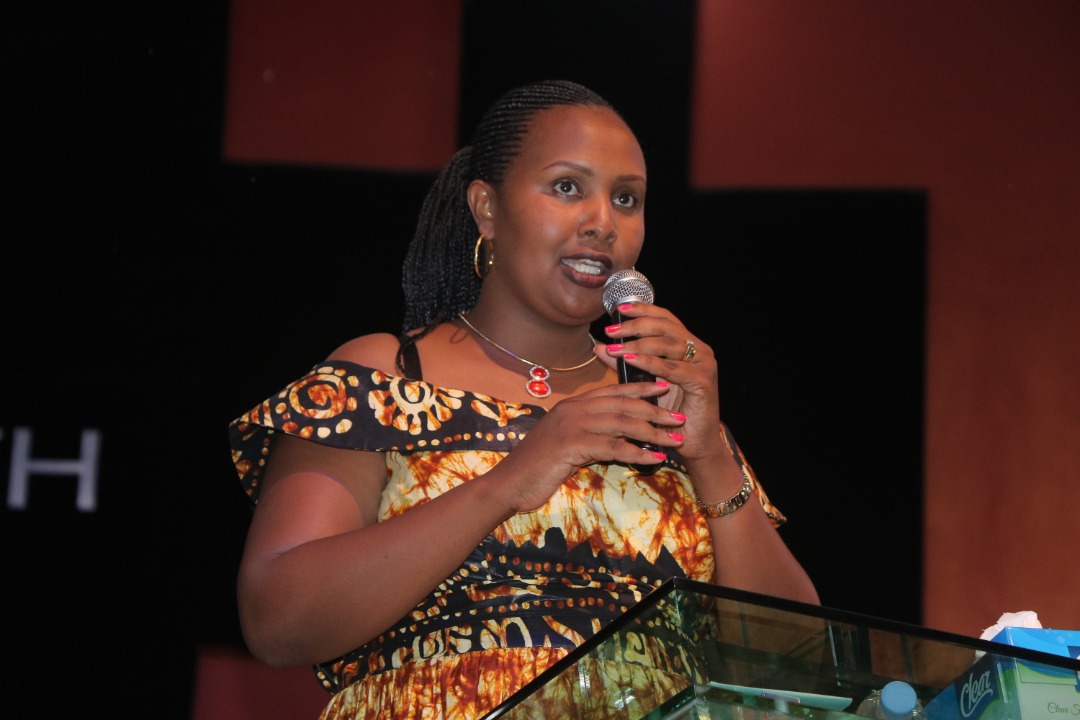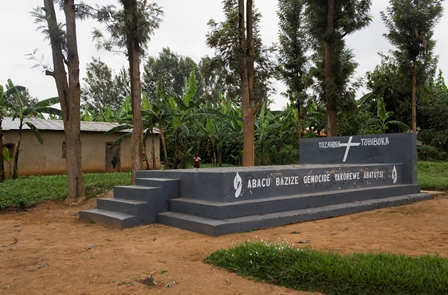
Josee Rugambwa giving her testimony on killings at Gahanga
In its daily documentation of the events that led up to the 1994 Genocide against the Tutsi and what characterized the 100 days of the genocide, the National Commission for the Fight against Genocide (CNLG) shared details of what happened on April 10, 1994.
April 10, 1994, was characterized by the genocidal transition government continuing to implement its genocidal plan to exterminate Tutsi throughout the country.
From its archives, CNLG gave a chronology of events reliving the events as part of efforts to document the genocide and how it was implemented.
On this day, CNLG recalls that the French continued to assist the genocidal government of Jean Kambanda
“Evacuations to Paris continued, 94 orphans (mostly children of FAR soldiers) from the Sainte-Agathe orphanage, sponsored by Agathe Kanziga, wife of the late president, were evacuated via Bangui to Paris,”
“They were accompanied by 34 people, whose identity has never been revealed,” CNLG reveals
On the same day, Jérôme Bicamumpaka, the Minister of Foreign Affairs in the government of Jean Kambanda, met with the French ambassador, Jean-Michel Marlaud, and asked him for the intervention of French forces to “control the situation”. The genocidal government acted as though there were no massacres.
Still on the same day, Roman Catholic Church Bishops said they are saddened by Habyarimana’s death, but did not denounce the genocide.
In a press release written on April 10 by Mgr Thaddée Nsengiyumva and published in French in the Osservatore Romano, the Catholic bishops of Rwanda say they are dismayed following the death of his excellence Juvenal Habyarimana and shocked “by the number of assassinations perpetrated since that day”
They did not speak of massacres of Tutsi, but mentioned “disturbances”, and do not name the perpetrators of massacres.
They “pay tribute to the Rwandan Armed Forces (FAR) which take security issues to heart”.
They “welcome the establishment of a new government, to which they pledge their support. They ask all Rwandans to lighten the load of the new leaders by responding favourably to their calls and by helping them in carrying out the task they have assigned to the new government, namely: the return of peace and security, the fight against hunger and negotiations with the RPF ”.
This is a clear stand for the genocidaires because the bishops support an army which kills, and a government which massacres the Tutsi civilian population.
The massacre of Tutsi in the Rushashi sector, formerly Rushashi Commune
On April 10, 1994, many Tutsi were killed in Rwankuba at the Catholic parish, near the offices of the Rushashi Sector where there was formerly the Rushashi Sub-prefecture and a court, in Shyombwe and also at the Kinyari shopping center. The place was called “CND” in 1994.
Meetings planning the massacres of Tutsi were organized in Rushashi, some at the Bourgmestre of the former Musasa Commune, Havugimana Aloys and at the commune office, while others were organized at the headquarters of the Kigali Ngali Prefecture which were led by the Prefect Karera Francois, also at the office of the Rushashi Sub-prefecture, at that of the Rushashi Commune, at the Shyombwe Sector, at the EAV Rushashi and at the office of the Joma Sector.
The mayor of the Rwamiko Commune, and the Sub-prefect Biniga Damien examined the Tutsi at the Ruramba Health Center in the commune of Rwamiko
On April 10, 1994, Tutsis were killed who had taken refuge at the Ruramba nutritional center in Rwamiko Commune, Gikongoro Prefecture.
Among those responsible for this massacre are Mugirangabo Silas, Mayor of the Rwamiko Commune, the Sub-prefect Biniga Damiyani, Mutaganda, Ruramba Advisor, Gafaranga Innocent School Inspector in the Rwamiko Commune, Nkurikiyinka Célestin, teacher, Kidahenda Oswald, member of the Impuzamugambi from CDR, Kabuga Leodomir (CDR), Nkuriza Félicien, Ndabarinze, director of the Mata tea factory and Nkuriza Anatole, youth supervisor.
The meetings, organized by the authorities and which planned the massacres of the Tutsi, were held in the center of Ruramba, where currently a market has been built, and were chaired by the Sub-prefect Biniga.
In Ruramba there is a memorial of the Genocide perpetrated against the Tutsi, in which between 1200 and 1500 bodies of victims were buried.
Tutsis were massacred in Ngororero, Commune Satinskyi
From 8 to 10 April 1994, in Ngororero where there was the old palace of the MRND and the office of the Ngororero Sub-prefecture, in Gisenyi Prefecture, many Tutsis from the Satinskyi, Ramba and Gaseke Communes were killed and in surroundings; some of them were burned to death in gasoline in these buildings in which they believed to have found hiding. Many meetings which planned these massacres were held in the offices of what were formerly the Sub-prefecture of Ngororero and the Communes Ramba, Gaseke and Satinskyi.
Most of the Tutsi were killed on April 10, 1994, and it was this date that was chosen by the District to commemorate their memory.
Among them are Rwangarinda Berchmans, a teacher, and his family, the trader Bizimungu Martin, the family of Rukara and others who, after taking refuge there, returned to their homes. Tutsis were gathered at the office of the former Ngororero Sub-prefecture and were killed after meetings organized at the offices of the Ramba, Gaseke and Satinskyi Communes.
Gako soldiers massacred Tutsis on Rebero hill, in the Mayange sector
Rebero is located in the Bugesera District, in the Mayange Sector. In 1994, when the Genocide had just started, the Tutsi who lived near Rebero, those of Mayange, Kibenga, Mbyo and some of Nyamata and others, took refuge on the hill of Rebero for join the local Tutsi and be able to defend themselves.
On April 8, 1994, many Tutsi arrived on Rebero Hill and gathered, and on the same day they were attacked by a group of killers but resisted and repelled the attack.
On April 10, 1994, soldiers from the Gako military camp attacked and shot the Tutsi who were on Rebero Hill. There were very few survivors because the soldiers fired on them and were followed by Interahamwe who finished with stabbing those who were still breathing.
The extermination of Tutsi at the church in Gahanga
Since April 8, 1994, when the Genocide had intensified, many Tutsi from Gahanga and various other localities took refuge in the church of Gahanga. They were both Tutsi and Hutu who had not yet understood who was targeted by the massacres. On April 9, 1994, the local authorities and the Interahamwe asked the Hutu to leave the church. And when they got out, sometimes there were Hutu men who came to recover their wives and children who had taken refuge in the church. The Tutsi were not allowed to go out and on April 10, 1994 all the Hutu who had taken refuge there were left, and only the Tutsi remained in the church.

Josee Rugambwa giving testimonies about the atrocities at the Gahanga hill, April 10, 2019 at Evangelical Restoration Church Masoro
On the same day of April 10, 1994, the Tutsi began to be killed, but they resisted and repelled the Interahamwe, who claimed that they were stopping the attacks and that they would not return. It was Councilor Buregeya who then asked for the reinforcement of soldiers who would come to kill the Tutsi using firearms.
On the same day of April 10, 1994 soldiers arrived and shot at the Tutsi in the church, many were killed, and after the Interahamwe came to finish with still weapons those who were still breathing. Almost all of the Tutsi who were in the church were massacred and the few survivors were seriously injured.

Gahanga Genocide Memorial
The Genocide Memorial built on the site of the church contains more than 7,000 bodies of victims.
The tragedy that befell the Tutsi in Gahanga that very day can be better told by Josee Rugambwa, a genocide survivor, now married with four children. Rape, hunger, the extreme cold outside and fatigue were bad enough to make her traumatised.
She is now healed from trauma thanks to God and last year, she was able to share her testimony.
Interahamwe massacred Tutsi in Rwinkeke, Karambi
In Rwinkeke in Karambi, in Murundi Sector, there was a Catholic church. On April 8 and 9, 1994, many Tutsi took refuge there. On April 10, 1994, the local Hutu, supported by Interahamwe from Murambi at Gatete Jean Baptiste’s house, exterminated all these Tutsi and threw them into latrine pits which had been dug near the church. At the head of the killers was Gahirwa Appolinaire who was convicted of the crime of genocide, but has now completed his sentence and has been released, as well as the man named Gakwandi who has never been arrested before being brought to justice.
The massacres were committed in other parts of the country
Massacres were perpetrated in the parish of Nyarubuye, Rusumo, 3 to 4,000 dead were counted. The killings were organized by the Bourgmestre Sylvestre Gacumbitsi.
On the same day, the Interahamwe massacred the Tutsi in Karambi, Cyimbogo commune (Cyangugu).
Between April 10 and 11, there was a massacre in the church of Zaza (Kibungo), more than 1,000 dead. On April 10, the great massacre took place in the parish of Kiziguro organized by Jean-Baptiste Gatete, bourgmestre of Murambi, 3,500 to 3,700 dead.

